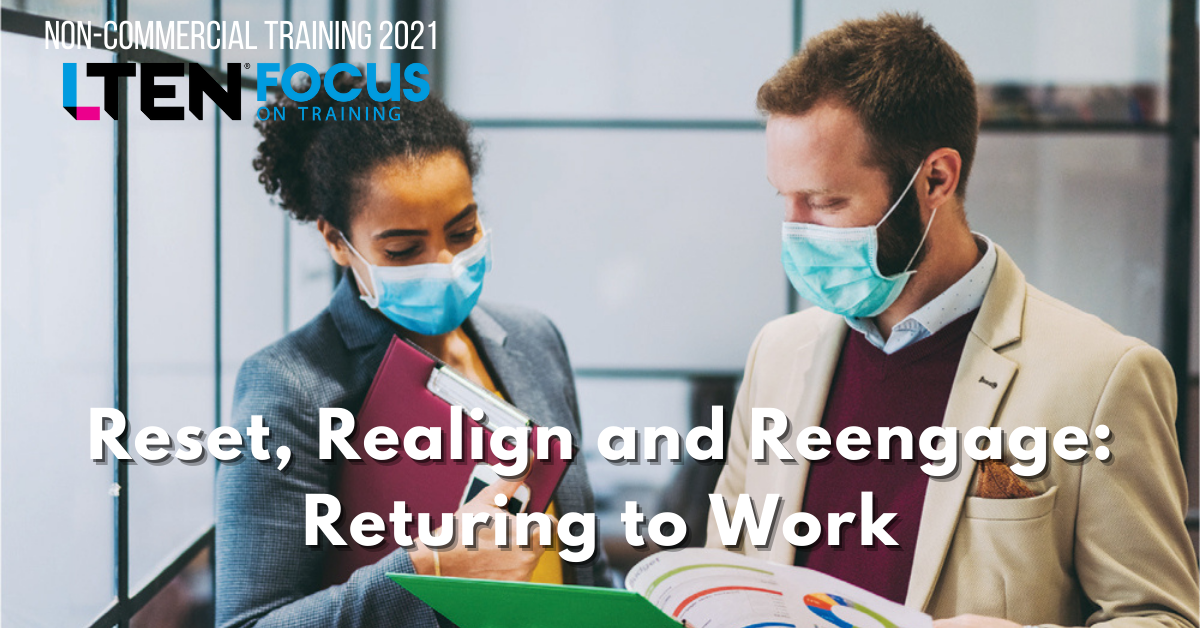
Reset, Realign and Reengage: Returning to Work
Feature Story – By Wendy Heckelman, Ph.D. and Sheryl Unger, MILR
Life sciences organizations have unique spins on return-to-work
A year ago, “work from home” became the norm throughout the life sciences industry, except for teams actively involved in vaccination research and production, or teams advancing work on other critical medical needs. For those working at home, employees adapted to virtual meetings, technological barriers and the inevitable blending of their personal and private lives. Now, these employees are being asked to recalibrate their lives to in-person work.
Employees are experiencing significant anxiety around the uncertainty of future working life. According to Harvard Business Review, recent industry surveys indicate that anywhere from a quarter to more than half of employees are planning to look for a new job post-pandemic. Many of these individuals cite reasons such as concerns about their company’s post-pandemic policies or changes in workplace dynamics that have resulted from remote work, especially given the imminent transition back to in-person or hybrid work.
 While every life sciences organization is taking its own spin on return-to-work – whether that is through in-person, remote or hybrid options – they all share one thing in common: the need to reset their employees as they approach another major work transition.
While every life sciences organization is taking its own spin on return-to-work – whether that is through in-person, remote or hybrid options – they all share one thing in common: the need to reset their employees as they approach another major work transition.
Typically, learning and development (L&D) professionals are tasked with designing and providing toolkits that are necessary for facilitating team resets and ensuring that individuals are working together in a smooth, efficient and consistent manner.
While resetting teams to a new way of working will look different for each organization, research supports a few key actions for leaders, HR and training professionals to take from three different perspectives that will ensure an effective return-to-work plan.
Organizational Perspective
Focus on enterprise-level decisions, communication and risks that impact the overall organization.
- Transparently share re-entry plans and remain open to personalized requests. Before employees return to the office, Forbes suggests that leaders should maintain open and clear communication about their plans for returning to work, as well as the options they plan to provide for those who want to continue at-home work or pursue a hybrid path. Leaders should also provide ample space and opportunity for individual employees to ask questions, express concerns or request personalized reentry plans.
 Revisit the organization’s priorities to build strategic agility. It is unrealistic to expect an organization to operate exactly as it did prior to the pandemic. Research by Accenture proposes that leaders must employ a workplace model that leverages technology, diverse team building, and upskilling to fuel growth while adapting to the dynamic world around it. It is now more critical than ever for leaders to focus on clearly communicating revised strategies and priorities while continuing to build agile operating models that allow employees to quickly respond to both external and internal changes.
Revisit the organization’s priorities to build strategic agility. It is unrealistic to expect an organization to operate exactly as it did prior to the pandemic. Research by Accenture proposes that leaders must employ a workplace model that leverages technology, diverse team building, and upskilling to fuel growth while adapting to the dynamic world around it. It is now more critical than ever for leaders to focus on clearly communicating revised strategies and priorities while continuing to build agile operating models that allow employees to quickly respond to both external and internal changes.
Team Perspective
Focus on equipping team leaders to execute changes and ensure teams are prepared to focus on key priorities.
- Lead with empathy and determine who needs to return to work.
Recent research by PWC suggest that 54% of companies plan to make remote work a permanent option for roles that would be compatible with such work. Leaders must exercise empathy and understanding for those who need to return the office and those who may continue to work from home. Determining this is critical because as PWC suggests, applying a uniform return-to-work policy may inevitably drive some valued employees away. - Prepare team leaders to conduct team resets. During remote working, team leaders were focused on resetting team dynamics virtually. The use of technology and other ways of working were established to ensure productivity and ongoing communication. Returning to the workplace requires another reset given changes in team configurations and new priorities. Best practices call for executives, HR and L&D to ready leaders to conduct these sessions with the tools and methodologies to focus the team’s ability to align on priorities, reestablish ways of working or “rules of engagement” and reconnecting as a team
- Carve out space for employees to reconnect and rebuild relationships. Given that most employees have gone over a year without in-person work, relationships between coworkers, leaders, and teams have inevitably changed over time. SHRM brings forth the idea that employees need the time and space to reconnect with one another, especially after the turmoil and hardship that was universally felt over this stretch of time. One way to do this is through networking or social events.
Individual Perspective
Focus on managing your own reactions to the changes within your organization.
- Open up to change and be willing to let go of old methods of operation. Once leaders have aligned on their organization’s new goals and overall strategy to develop a new operating model, it is time to energize employees to encourage new ways of working. While it is easy to revert to the methods of the past, employees of an agile organization will embrace new ways of thinking and working that align with the organization’s new priorities. This mindset and operational shift must begin with leaders. PWC argues that leaders will have to let go of how “things have always been done” and adopt new strategies, tools and technologies to fit the growing and evolving demands of the future.
Conclusion
As life sciences companies return to in-person work or adopt varied models to cater to the diverse needs of their employees, they will have to grapple with the changes that this past year has imposed on the market, employees and the world at large. Though each organization’s approach to “return-to-work” will be unique, they will all face the same broad-spanning challenges.
Every L&D professional and key decision-maker should be prepared for the road bumps ahead and develop a plan to reset, realign and reengage their employees.
Dr. Wendy Heckelman is president and founder of WLH Consulting. Sheryl Unger
provides project management support for WLH Consulting. Email them at
wendy@wlhconsulting.com and sheryl@wlhconsulting.com.








